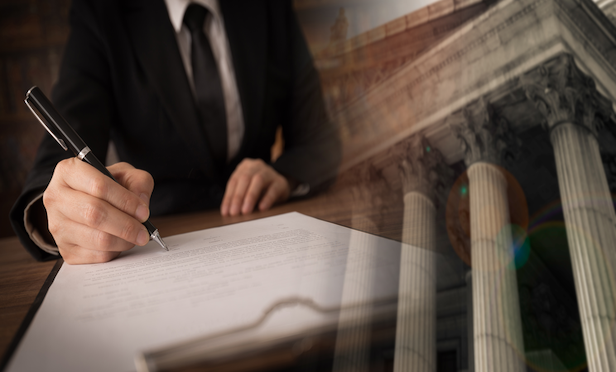 During hard financial times it's not unusual to see an uptick in different types of fraud. (Photo: Shutterstock)
During hard financial times it's not unusual to see an uptick in different types of fraud. (Photo: Shutterstock)
COVID-19 makes it difficult to predict what insurers can expect from the future. But we can look back at other crises and gain some meaningful insight into how claims organizations may be affected. When the curve flattens, and life begins a return to normalcy, we will potentially see some interesting claims dynamics emerge that will impact results for the foreseeable future.
With much of the American population under lockdown, there will be a significant drop-off in the number of auto-related claims. Already, some insurers are refunding premium payments to policyholders. With many people out of work, there may be a reduction in policies in-force for some lines. Down here in Florida, traffic is sparse. With checkpoints set up at the borders to keep non-residents and non-essential people and equipment out, traffic should dwindle even further, in particular on the highways.
There will be a corresponding reduction in claims based on fewer miles being driven. How long this lasts is yet to be determined, but just as we are watching for the bend in the curve of new COVID-19 cases on the way up, we will be monitoring miles driven and accident frequency on the way down.
So what can we expect?
With this global pandemic, we are seeing the paradigm of the world-changing. Manufacturers are stepping up and retooling to provide much-needed medical equipment. Millions of people across the globe are now in a virtual environment working from home, with digitization moving front and center.
This will impact claims organizations in a variety of ways. With a record 3.1 million claims for unemployment filed in just one week, the environment has become ripe for opportunistic fraud. It begs the age-old question: Does a bad economy increase crime? During the 2008 recession, the Coalition Against Insurance Fraud did see an uptick in different types of fraud, such as auto give-ups and arson. We may see similar trends develop as unemployment rises, and people struggle to make ends meet.
Typically, insurance fraud is more prevalent in large metropolitan areas. The current crisis, at least for now, is disproportionately impacting those areas from coast to coast. This includes areas that have a high propensity for fraud to begin with, such as downstate New York, South Florida and Los Angeles.
Emerging COVID-19 claims
Let's consider a few other things that may transpire.
While fewer car crashes are happening now due to quarantine orders, there will likely be an uptick in bodily injury claims once these orders are lifted. As people return to retailers and other public places, there will likely be an increase in slip and falls and other general liability claims. Some trial lawyers and medical providers who specialize in personal injury claims may potentially get more aggressive with their treatment to recoup their losses from the shutdown.
We are already seeing victims of the coronavirus file lawsuits against cruise lines. This could very well become a cottage industry for class action litigation, extending from cruises to airlines, hotels, Amazon or local grocery chains.
From a workers' compensation standpoint, there may be risks. A significant percentage of the workforce moved from offices to working from home in less than two weeks. This could potentially have an impact on workers' compensation claims. While many commercial offices have surveillance systems that can potentially be used to validate claims, most homes do not.
Consider the case of Sandberg v. JC Penney, where an employee successfully received worker's compensation for her injuries after tripping over her dog while walking to the garage. As a designer, the plaintiff worked from home and kept work materials in the garage. Since her home premises and work premises were the same, the court decided that her injury did indeed arise in the course of her employment.
Beyond the employed who claim injury, what about the spike in unemployment, a target-rich group for cappers in staged accident schemes? Pooling people in need of money into sham accidents has proven to be highly successful, and there is an entire supply chain of unscrupulous attorneys and providers that enable these types of claims.
Being proactive
So how do carriers best protect against fraud, waste and abuse? It will take a combination of people, processes and technology. Adjusters are critical to the outcome of claims involving questionable injuries or causation. Arming your adjusters with state-of-the-art technology and data-driven analytics makes them more efficient and leads to more accurate outcomes.
By anticipating what is to come and utilizing effective, analytics-driven tools, adjusters can focus on claims with the highest propensity for some type of abuse. This can be driven by metrics aggregated by tools that examine factors such as link analysis, utilization, duration and necessity of treatment, attorney/provider relationship, among others.
Fraud identification is just part of the solution, as many other cases may have some legitimate components and still end up in litigation. With attorneys hitting the pause button for a couple of months, there may be a higher incidence of future legal actions. This could include the emergence of new forms of litigation, such as those specifically targeting any potential tortfeasor involving the coronavirus pandemic.
Beyond data-driven platforms, there are legal support solutions that can help carriers and defense firms be more nimble in areas such as case creation, subpoena redaction, research and other ancillary legal functions.
Low-hanging fruit
From both a financial and emotional perspective, 2020 is going to go down as a difficult year. Companies will struggle to make numbers. At the end of the day, everyone must figure out how to survive. Claims organizations can provide a critical influx of cash through improved subrogation processes.
During my 25 years in the world of insurance claims, I have often cited subrogation as the single biggest opportunity to find low hanging fruit. This is an area that often isn't viewed as a strategic priority, except when times get tough — like now.
Ever-changing dynamics and the current fluid situation makes it hard to know what the employment situation within insurers will look like in 60, 90 or 120 days. We can speculate that once the pandemic subsides, there will be an increase in miles driven and an uptick in claims, but will enough claims personnel still be in place?
Like injury claims, analytics can be used to effectively identify new and missed subrogation opportunities. Some tools provide analytically-driven algorithms on everything from triage and workflow to scoring and pursuit recommendations. By leveraging an entire subrogation ecosystem, adjusters can find money faster and bring it back to carrier bottom lines, easing the pain of 2020 and beyond.
We may not know where we are going, but history provides valuable clues. Understanding behaviors from the past will provide valuable insight into what we can expect when the pandemic subsides. However, preventing these events before they arise and providing adjusters with the tools and training they need will have a positive impact on efficiencies and improve quality outcomes.
Chris Tidball ([email protected]) is vice president of sales and claims transformation strategy at EXL.







